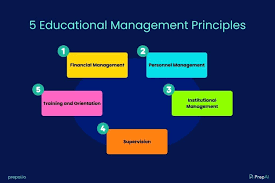A Beginner’s Walkthrough to Understanding UDISE in School Management

If you’re new to school administration in India, one term you’ll hear often is UDISE. At first glance, it might sound like just another government acronym, but UDISE has a far bigger role. It is the central system that helps India keep track of every school, every teacher, and every student.
This guide is designed to give beginners a simple, real-world understanding of UDISE — what it is, why schools use it, and how it helps improve education at the ground level.
What Exactly is UDISE?
UDISE stands for Unified District Information System for Education. In simple words, it’s a national school information system that collects data from every school in the country once every academic year.
This data includes:
- Number of students enrolled
- Strength of teaching staff
- Availability of classrooms and facilities
- Student categories and attendance patterns
- Community, medium of instruction, and school type
Rather than guessing or estimating, the government uses this verified data to plan improvements in the education system.
Why UDISE Exists
India is home to one of the largest school systems in the world. Without reliable data, government planning would become guesswork. UDISE ensures schools are seen, counted, and supported.
It exists to:
- Understand school needs
- Track growth and enrollment trends
- Plan teacher appointments and transfers
- Allocate funds and improve infrastructure
- Ensure transparency across the system
If a district needs more science teachers or a new school building, UDISE data helps justify and approve it.
How Schools Participate in UDISE
Every year, schools are asked to submit detailed information through official UDISE forms or online entry systems.
A typical UDISE cycle looks like this:
- School collects information internally
- Data is entered and reviewed by school staff
- Block and district officials verify entries
- Final data is approved and added to national records
Schools usually appoint a nodal teacher or staff member to manage the data collection and submission work.
What Information Does UDISE Require?
New users often wonder what exactly they need to prepare. UDISE collects a clear and wide range of information, including:
School Profile
- Name, code, location
- Management type (Govt/Private/Aided)
- School level (Primary/Secondary)
Student Details
- Total enrollment by class
- Girls and boys count
- SC/ST/OBC/EWS categories
- Students with special needs
Teacher Details
- Qualifications and subjects
- Experience and employment type
- Teacher training history
Facilities and Infrastructure
- Classrooms & condition
- Drinking water and washrooms
- Electricity, internet, library
- Playground and safety features
It may sound like a lot, but most schools already keep these records — UDISE simply compiles them in one place.
How UDISE Supports School Management
For beginners, it’s important to understand that UDISE is not just reporting. It directly benefits schools by helping them:
- Request additional classrooms or teachers
- Receive funds for repairs and upgrades
- Track student attendance and progress
- Monitor dropout trends and improvement areas
- Ensure fair distribution of resources
Good data means better support — especially for schools in rural and underserved areas.
Common Myths New Staff Have
Myth 1: UDISE is only paperwork
Truth: It influences real funding and support decisions
Myth 2: Only government schools need UDISE
Truth: All recognized schools must participate
Myth 3: It’s done once and forgotten
Truth: UDISE is annual and requires careful updates each year
Tips for Beginners Handling UDISE Work
- Keep school registers updated throughout the year
- Review information before final submission
- Coordinate with teachers for accurate student data
- Store login details securely
- Don’t wait until the last week — the portal gets busy
A little organization goes a long way.
Final Thoughts
UDISE might feel technical when you first hear about it, but at its heart, it’s a tool for building better schools. When data is correct and up-to-date, schools receive support faster and more fairly.
For every teacher or administrator beginning this journey, think of UDISE not as a form-filling task, but as your school’s voice in the national education system. The better you report, the stronger that voice becomes.
Accurate data today helps shape smarter classrooms and stronger learning opportunities tomorrow — and that is something every educator contributes to.





